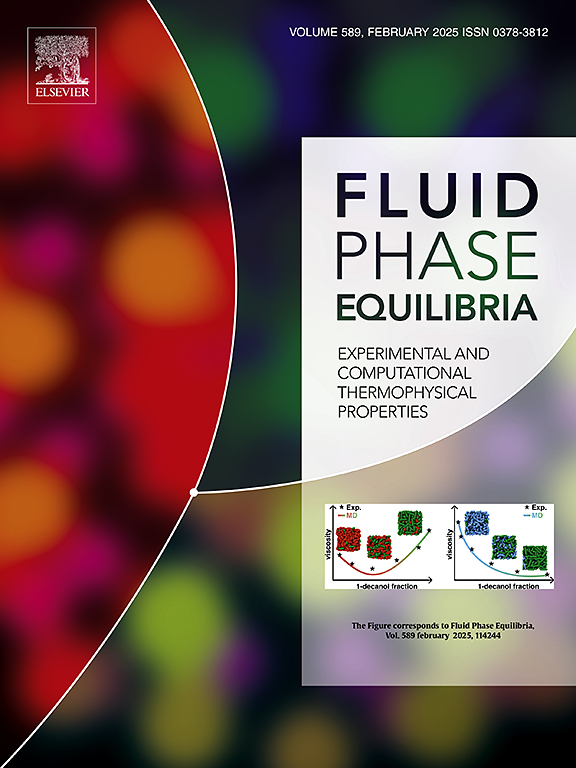Confined static microstructures and dynamics of glycerol molecules within sub-2-nm diameter carbon nanotubes: Molecular dynamics study
IF 2.7
3区 工程技术
Q3 CHEMISTRY, PHYSICAL
引用次数: 0
Abstract
In this work, molecular dynamics (MD) simulations were performed to investigate the microstructural and dynamical properties of glycerol molecules confined within sub-2-nm diameter carbon nanotubes (CNTs). As the tube diameter increases, the arrangement of confined glycerol molecules transitions from a single-file chain to a single-layer ring, and then to a multi-layer structure. The average self-diffusion coefficient of glycerol molecules within CNTs is found to change from 0.021 × 10–8 to 4.26 × 10–8 m2/s. Notably, the relaxed single-file arrangement of glycerol molecules in (8, 8) CNT exhibits the highest self-diffusion (4.26 × 10–8 m2/s), which is an order of magnitude greater than that observed in aquaglyceroporins. Based on the detailed hydrogen bond (HB) microstructure analysis, we found that the product of average number of HBs (〈nHB〉) and the percentage of glycerol molecules with two HBs (f2), and the 1 / average HB lifetime (〈τHB〉) can serve as indicators of the self-diffusion coefficients of confined glycerol molecules. A higher 〈nHB〉 * f2 / 〈τHB〉 can result in a faster self-diffusion coefficient.
亚2纳米直径碳纳米管中甘油分子的受限静态微观结构和动力学:分子动力学研究
在这项工作中,分子动力学(MD)模拟研究了限制在直径低于2纳米的碳纳米管(CNTs)中的甘油分子的微观结构和动力学性质。随着管径的增加,受限制的甘油分子的排列从单链转变为单层环,然后转变为多层结构。甘油分子在CNTs内的平均自扩散系数从0.021 × 10-8变化到4.26 × 10-8 m2/s。值得注意的是,甘油分子在(8,8)碳纳米管中松散的单排排列表现出最高的自扩散(4.26 × 10-8 m2/s),比在水甘油孔蛋白中观察到的要大一个数量级。通过详细的氢键(HB)微观结构分析,我们发现平均氢键数(< nHB >)与具有两个氢键的甘油分子百分比(f2)的乘积,以及1 /平均氢键寿命(< τHB >)可以作为密闭甘油分子自扩散系数的指标。较高的< nHB > * f2 / < τHB >可导致更快的自扩散系数。
本文章由计算机程序翻译,如有差异,请以英文原文为准。
求助全文
约1分钟内获得全文
求助全文
来源期刊

Fluid Phase Equilibria
工程技术-工程:化工
CiteScore
5.30
自引率
15.40%
发文量
223
审稿时长
53 days
期刊介绍:
Fluid Phase Equilibria publishes high-quality papers dealing with experimental, theoretical, and applied research related to equilibrium and transport properties of fluids, solids, and interfaces. Subjects of interest include physical/phase and chemical equilibria; equilibrium and nonequilibrium thermophysical properties; fundamental thermodynamic relations; and stability. The systems central to the journal include pure substances and mixtures of organic and inorganic materials, including polymers, biochemicals, and surfactants with sufficient characterization of composition and purity for the results to be reproduced. Alloys are of interest only when thermodynamic studies are included, purely material studies will not be considered. In all cases, authors are expected to provide physical or chemical interpretations of the results.
Experimental research can include measurements under all conditions of temperature, pressure, and composition, including critical and supercritical. Measurements are to be associated with systems and conditions of fundamental or applied interest, and may not be only a collection of routine data, such as physical property or solubility measurements at limited pressures and temperatures close to ambient, or surfactant studies focussed strictly on micellisation or micelle structure. Papers reporting common data must be accompanied by new physical insights and/or contemporary or new theory or techniques.
 求助内容:
求助内容: 应助结果提醒方式:
应助结果提醒方式:


